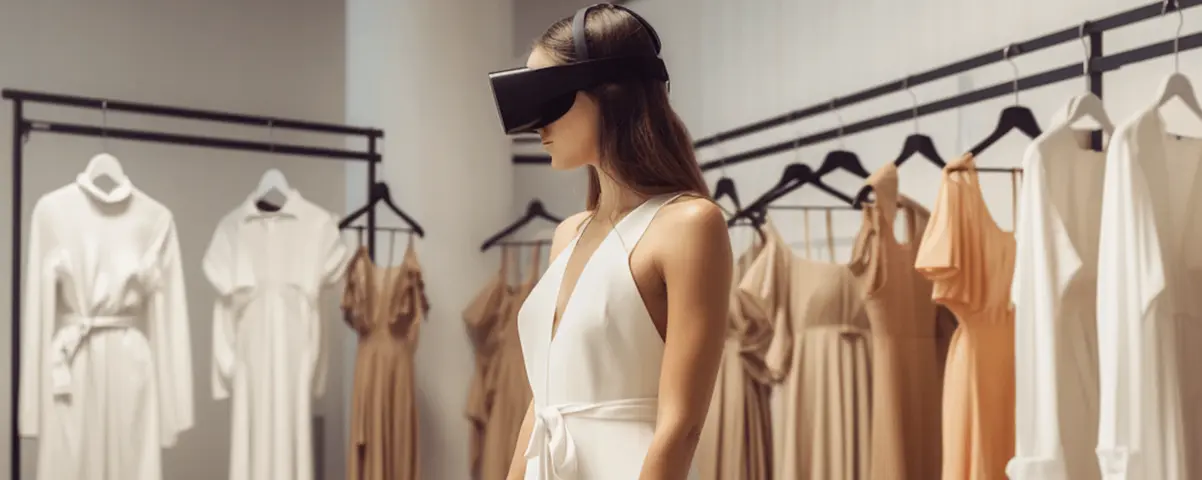Metaverse to NFTs: 5 ways fashion is doing digital product creation
Introduction
The fashion industry has been making big strides in the move towards new-age technologies recently. For the past couple of years, the move to digital, metaverse, and/or 3D fashion products has transformed the industry, engaging everyone from fashion designers to online gamers.
What started as a niche movement has become an entirely new product category for fashion designers and brands. A growing number of fashion houses are learning how to leverage 3D assets and design. This innovation is allowing them to create engaging AR experiences as well as virtual stores and showrooms.
What is digital product creation in the fashion context?
Digital product creation is the process of using technology to conceptualize, design and develop new products (3D or otherwise) to be used and displayed in a virtual environment.
Fashion designers are embracing the remarkable potential of 3-dimensional design and virtual reality. 3D technology allows designers to not just create photo-realistic digital products but also churn out more versions, quickly and easily. So much so, that fashion schools have begun adding 3D design software tools like Clo-3D and Stitch as key modules in their curriculum. Major brands like Adidas, Gucci and more now hire in-house 3D fashion designers.
The fashion industry is becoming increasingly digital and brands such as Gucci, Louis Vuitton, Balenciaga, Nike and Ralph Lauren are all earning millions from digital-only products like NFTs.
What are some of the playgrounds for digital product creation in fashion?
VIDEO GAME SKINS
Video game skins have opened up a whole new category for fashion brands, individual designers and artists. Trendsetters in the fashion industry are riding the e-sports wave by creating video game skins inspired by everything from pop culture to hot luxury items like the ‘Hermes Birkin’.
For the uninitiated, a video game ‘skin’ is the appearance and/or outfit of your digital avatar in a video game setting. Skins generally serve a purely aesthetic purpose, but they sometimes help signify your level or expertise in a game. And you’ll be surprised to learn how much money people are willing to shell out real dollars for these digital clothes. Turns out, people care about how they look in virtual worlds just as much as they care about their looks in the real world! In fact, skins are estimated to be a $40 billion market according to gaming monetization firm DMarket.
So, it’s no secret that video game companies make billions of dollars every year from character skins alone. Gamers’ penchant for customizing their avatars with branded clothing has prompted big fashion brands to collaborate with gaming companies like Roblox and Epic (Fortnite x Balenciaga).
SHOWING OFF ON SOCIAL MEDIA
We all know the power of social media to create, drive and kill fashion trends. These days, platforms like TikTok, BeReal, and Instagram are single-handedly responsible for giving birth to plenty of niche style movements. Dark academia, cottage core, Y2K era and most recently, Indie Sleaze are just a few that come to mind.
For social media, digital clothes seem to be a perfect solution. Why buy a complete physical outfit when you only really want to post a picture once and move on? Digital fashion could very well be the solution to the unique problem of throwaway fashion culture on social media.
Several fashion start-ups including DressX and The Fabricant have taken note of this practice and are creating digital-only clothes that you can “wear and show off” on social platforms, in video games and video calls. In 2021 London Fashion Week, fashion brand Auroboros presented a purely digital ready-to-wear collection called Biomimicry, making them the first brand to do so in the world.
METAVERSE FASHION WEEK
Between 2020 to 2022, the pandemic put a pause on fashion weeks for several seasons. Now the runways are back in most parts of the world, but the experiments with virtual fashion shows have shaken the industry from its core. Many have argued that the cancellations of mega fashion weeks were a blessing in disguise.
The fashion industry’s reliance on a seasonal runway show schedule is unsustainable. Just the sheer act of designers, models, influencers and editors traveling to multiple cities each season on a 5-day rotation causes an insane carbon footprint. Not to forget, the cost of organizing a show itself (upwards of $50,000) will give you pause.
Could a virtual fashion week be a better alternative? In the last couple of years, many individual brands including Mimi Wade, Mowalola and Collina Strada have experimented with the concept. And March 2022 witnessed the first edition of a proper Metaverse Fashion Week, held in Decentraland.
Giovanna Graziosi Casimiro, head of Metaverse Fashion Week said in a statement that “web3 and the metaverse serve as complements to fashion activations in real life.” Meanwhile, fashion critics say that while the first edition left a lot to be desired, there is huge potential in the future of Metaverse Fashion Weeks.
IMMERSIVE AR/VR STORES
In line with the popularity of virtual shows, the Metaverse is becoming a great opportunity for brands to open up their virtual storefronts. While most virtual stores in the Metaverse currently seem like a marketing and brand activation activity for fashion brands, they offer great sales potential. Take for example Balmain’s virtual shop with loud music and avatars, or Nike’s rule-free virtual store Nikeland on Roblox.
Nonetheless, the advancement of new fitting and try-on technologies will ensure that virtual stores and showrooms only get more powerful with time. Virtual showrooms allow fashion brands to create immersive online shopping experiences that can be a lot more engaging than an ecommerce site. Rest assured, they will help brands increase customer engagement and boost sales.
B2B VIRTUAL SHOWROOM
Covid-19 didn’t just kill fashion shows, it also made the highly exclusive showroom appointments with buyers which was often the only chance for a brand to connect with major stockists and retailers impossible. Meanwhile, trade shows, garment fairs and physical appointments which were important for brands to get new business from brands also went absent.
While the concept of a Virtual Showroom has existed for some time. A new era for B2B virtual fashion showrooms might be here. Brands are tapping into 3D product design and high-quality video content to make virtual buying much easier!
WFX Virtual Showroom supports not just 2D, 3D product images, illustrations and videos but even allows brands/manufacturers to communicate directly with buyers, discuss sample iterations and place bulk orders within the same platform. WFX Showroom allows brands to integrate their PLM or ERP system to directly extract product spec sheets and other information into the showroom.
With WFX, brands can design inspirational showroom pages, create customized collections and invite each buyer through a secure link. For buyers, this means they can place orders anytime and from anywhere without spending a bomb on travel. For brands, virtual showrooms empower them with access to powerful analytics and data that’s impossible to capture through physical showroom visits. They can tap into powerful metrics such as “click through rate”, “browse through rates”, “enquiry and sample hit rates” to better plan their future lines.
In conclusion
For the fashion industry, the shift to digital and 3D-design has opened a whole new world of business possibilities that have made the design, creation and marketing of clothes easier than ever before. And if our predictions are correct, then this means fashion designers will have to adapt their roles within their companies, keeping up with new trends in fashion and technology alike—not to mention integrate these latest innovations into their daily workflow.






